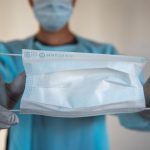What if bioinformatics could measure health for an early diagnosis of disease?
Bioinformatics joins biology and computing together to analyse data from biological samples. Professor Shoba Ranganathan recently hosted a conference that addressed how we can mine biological data to quantify health and develop preventive healthcare strategies.
What is bioinformatics? It is at the confluence of biology and computing. It is an often overlooked but absolutely vital enabling science. It provides powerful computational tools to analyse the vast amounts of data generated from technologies such as genomics, proteomics and systems biology.
Scientists from these backgrounds as well as from maths/statistics and medical/biomedical disciplines from the Asia-Pacific region attended the recent InCoB (International Conference on Bioinformatics) in Sydney, the 13th annual meeting of the Asia Pacific Bioinformatics Network. The Sydney conference was the first one in Australia, with 2015 allocated to Tokyo, Japan.
The theme of this year’s conference was “Transformational Bioinformatics” – towards comprehensively understanding biological data from humans and other organisms and convert these into useful technologies. Over two and a half days we listened to cutting edge research. The best papers are under publication as special issues of international open access journals: BMC Genomics, BMC Systems Biology, BMC Bioinformatics and PeerJ.
In attempting to deal with gender balance of the invited speakers, the scales were tipped in favour of women, with Prof. Mary O’Kane, NSW Chief Scientist and Engineer giving the Opening Address. Plenary talks covered mutations in DNA, proteomics, RNA Biology, systems biology, mathematics, statistics and computer science as well as bioinformatics training to equip scientists with the finest, current “tools of the trade” and best practice methodologies.
Feedback from the participants was extremely positive, especially as this was the first InCoB in Australia. Accolades aside and post the relief of hosting a successful international meeting, the question still remains: Are we missing something in today’s healthcare? With so much biological and clinical data currently available on human disease and myriad infectious agents, can we now address the questions of coping with an increasingly ageing population and the explosion in chronic diseases being diagnosed early? Are we focussing principally on diseases without quantifying what constitutes health?
The recently published principal causes of death in Australia suggest cardiovascular and neurological diseases weigh in equally as all the cancers put together!
Slowly but surely there is a progression from health to disease – should this be something we can track, using biological data, for early detection of transitions or shifts?
Can the vast repositories of biological data be mined to define health, using genomic/proteomic/other tests from accessible tissues and non-invasive tests: blood, urine, skin, saliva, cheek swabs? Questions and more questions – and we will find the answers.
Prof Shoba Ranganathan (PhD) holds a Chair in Bioinformatics at Macquarie University since 2004. She continues to host the Macquarie Node of the ARC Centre of Excellence in Bioinformatics (funded 2008-2010). She was elected the first Australian Board Director of the International Society for Computational Biology (2003-5), President, Asia-Pacific Bioinformatics Network (2005-) and Steering Committee Member (2007-12) of Bioinformatics Australia. She served on the National Bioinformatics Strategy (2005) and the NSW Health and Medical Research Strategic Review (2012), and is a member of the NH&MRC Expert Panel on Bioinformatics and Biostatistics (2012-). She was awarded the UNESCO Chair of Biodiversity Informatics (2008-2010). Shoba has 165 peer-reviewed publications (including Science, Nature, Nature Genetics; 97 in the last five years), with >3600 citations (h-index=33; i10-index=81). She has attracted >$5M international and national grants and is a grant, thesis, promotion, tenure and journal reviewer. She is also an editorial board member for international journals.












